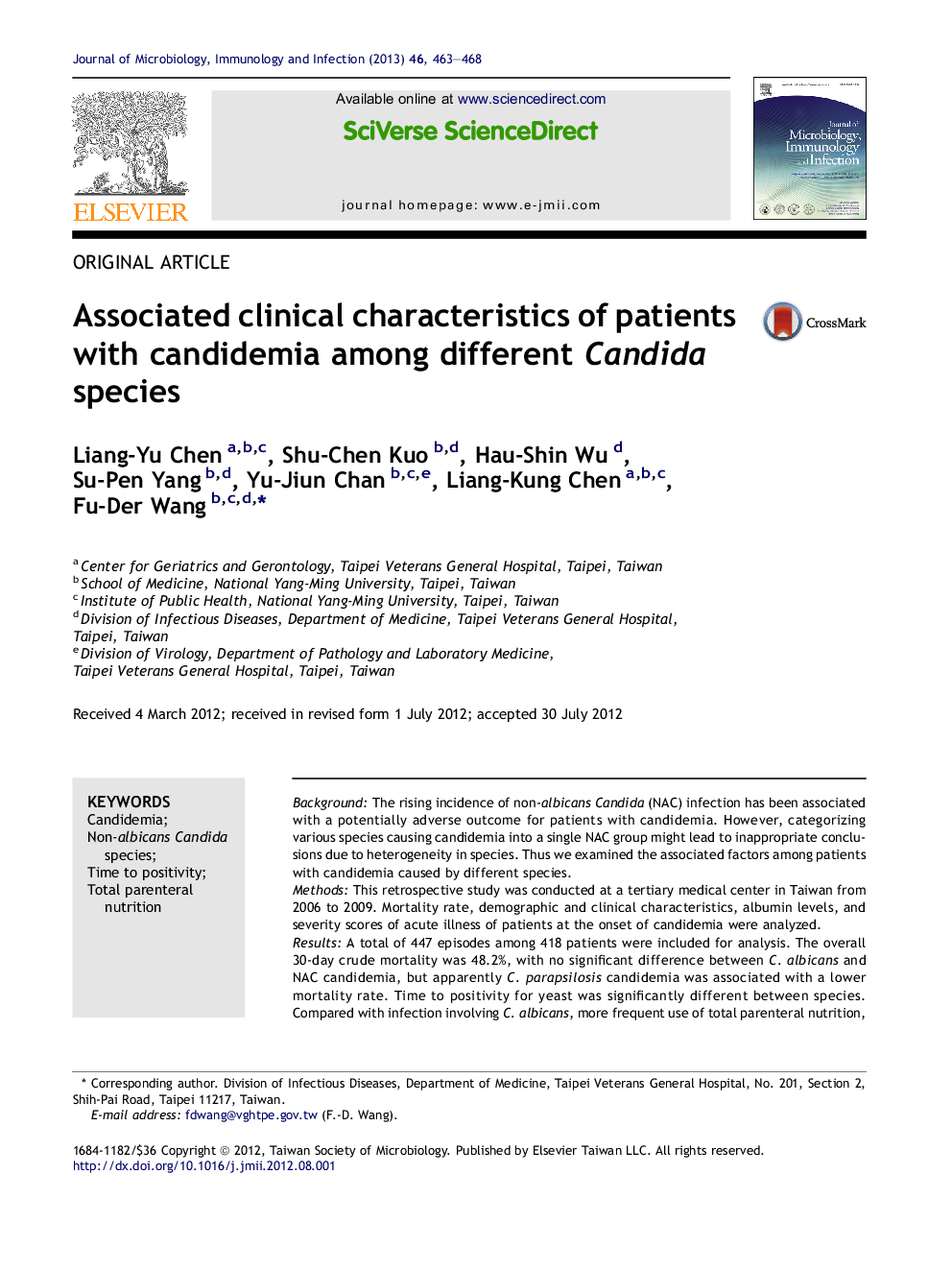| Article ID | Journal | Published Year | Pages | File Type |
|---|---|---|---|---|
| 3378111 | Journal of Microbiology, Immunology and Infection | 2013 | 6 Pages |
BackgroundThe rising incidence of non-albicans Candida (NAC) infection has been associated with a potentially adverse outcome for patients with candidemia. However, categorizing various species causing candidemia into a single NAC group might lead to inappropriate conclusions due to heterogeneity in species. Thus we examined the associated factors among patients with candidemia caused by different species.MethodsThis retrospective study was conducted at a tertiary medical center in Taiwan from 2006 to 2009. Mortality rate, demographic and clinical characteristics, albumin levels, and severity scores of acute illness of patients at the onset of candidemia were analyzed.ResultsA total of 447 episodes among 418 patients were included for analysis. The overall 30-day crude mortality was 48.2%, with no significant difference between C. albicans and NAC candidemia, but apparently C. parapsilosis candidemia was associated with a lower mortality rate. Time to positivity for yeast was significantly different between species. Compared with infection involving C. albicans, more frequent use of total parenteral nutrition, lower Sequential Organ Failure Assessment score and higher albumin levels were observed for C. parapsilosis candidemia.ConclusionIdentifying associated factors for each species may be a more effective approach than single NAC grouping. Time to positivity may be a hint for treatment guidance in candidemia. More frequent use of total parenteral nutrition and less virulent nature were noted for C. parapsilosis candidemia.
